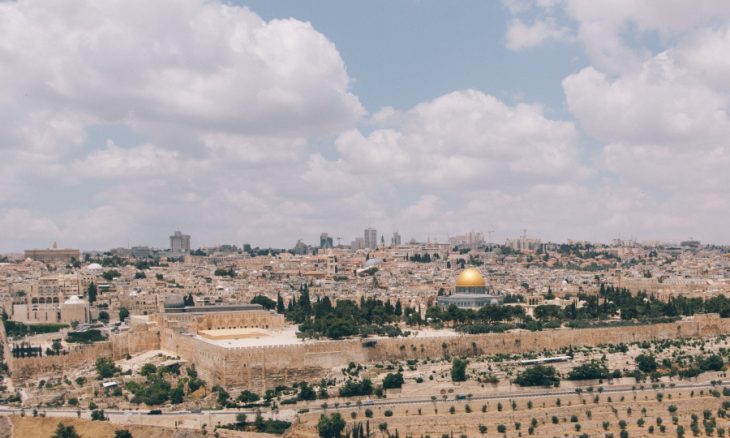
From pre-school, Jewish children are taught that, during the era of the Greek empire, a few Jews were able to overcome the force of the mighty Greek rulers in their effort to fight the forces of forced assimilation and maintain Jewish law and heritage. It’s worth taking a little bit of time from Lincoln casino no deposit bonus dreidel gaming to learn what archaeology tells us about that period.
Background
In 332 BCE, Alexander the Great defeated the Persian Empire and established a Greek presence in the Land of Israel. Little by little, the privileges that the Jews had enjoyed under the Persian empire disappeared. Many of the Greek rulers were hostile to the Jewish population and to Judaism itself. They attempted to introduce Hellenism into everyday Jewish thought and life and over time, a significant section of the population became secularized.
Over time, strife and factionalism overtook the Jewish population. The Torah was translated into Greek, some Cohanim took Greek names and traditional Jewish life was threatened.
What does archaeology tell us about what we know as the Chanukah story?
Greek Settlement in Eretz Yisrael
The excavations of Tel Kadish, an archaeological site located near Kibbutz Malkiya near the Lebanese border, show the influence of Greek infiltration into Jewish life. Tel Kadish was originally a Canaanite city which was a border site between Canaanites and Israelites during the period of the Tanach and between Phoenicians and Jews later on. Excavations began on Tel Kadish in 1997 and demonstrate the influence of the Hellenistic rule on the local population. Inside the large administrative complex, researchers found clay seals (bullae) which depicted Greek rulers. Nearby, at Banias, the Greeks built a pagan temple.
Further south, at Tel Maresha, located about a mile southeast of Beit Guvrin in the Sephalah, researchers have found the site where a major Hellenistic city was situated, inhabited by Greek-dominated cultures including the Sidonians and the Nabataeans.
Antiochus IV
Antiochus III let the Jews live “according to the Laws of their forefathers” (Josephus) but his son, Antiochus IV, reversed that policy. He placed idols in the Beit HaMikdash and forbade circumcision, the reading of the Torah and the observance of Shabbos. (this was when the tradition of reading the Haftorah was introduced, as readings of the Prophets was permitted). This was when the Jewish rebellion began, led by Matisyahu and his five sons.
According to legend, the revolt began when the rebels killed a Jew who was prepared to make a pagan sacrifice on the Mishkan. a Jew who wanted to follow Antiochus’ order to, chas v’shalom, make a pagan sacrifice on the Mishkan. The Maccabees lacked manpower and weaponry but were able to recapture Yerushalayim through spirit and determination and cleanse the Beis HaMikdash of pagan imagery and rededicate it in Hashem’s name.
One significant archaeological discovery that relates to this period is the excavation of the ruins of the Jerusalem Acra fortress which Antiochus IV built which he used during the siege of the city in 168 B.C.E. The fortress is referenced in the Book of the Maccabees and in Josephus’s writings as having been guarded by misyavnim (Hellenized Jews). The fortress was eventually captured by Shimon HaMaccabee in 141 B.C.E. Inside the fortress, researchers found coins, lead slight stones, bronze arrowheads, a catapult and ballista stones that bore the image of a pitchfork (a symbol of Antiochus IV).
Archaeologists had been searching for this fortress for more than a century. Digging began in the early years of the 21st century and the announcement of its findings was made after 10 years, in 2015.
The Times of Israel quoted the excavation’s directors Dr. Doron Ben-Ami, Yana Tchekhanovets and Salome Cohen as saying, “The new archaeological finds testify to the establishment of a properly fortified stronghold constructed on the high bedrock cliff overlooking the steep slopes of the City of David hill. This stronghold controlled all means of approach to the Temple, and cut the Temple off from the southern parts of the city. The many coins dating from the reign of Antiochus IV [Epiphanes] to that of Antiochus VII [Sidetes] and the large number of wine jars (amphorae) that were imported from the Aegean region to Jerusalem and were found at the site bear witness to the citadel’s age, as well as to the non-Jewish identity of its inhabitants.”
Modi’in
In 2013 an archaeological excavation was conducted in Umm el-Umdan in the modern city of Modi’in. The name of the place, which means “Mother of Pillars” in Arabic and sounds almost exactly like Modi’in, uncovered evidence of an ancient Jewish village with a synagogue that dates back to the Herodian era and another, just underneath, that dates to the Maccabean era. Graves that seem to be Maccabean family burial sites were found at Horbat HaGardi as well as a mikva.
Another Modi’in discovery involved 16 silver coins that dated to the Hasmonean period and honored Seleucid emperors along with bronze coins that had the names of Hasmonean kings including Yonatan, Yehuda, Yechonan and Mattithyahu emblazed on them.
Nearby in the Lachish Forest, coins, weapons and burnt wooden beams were unearthed last year, showing a structure believed to be part of a fortified line that the Greeks erected to protect the large Hellenistic city of Maresha from a Hasmonean offensive. The burnt beams, say the archaeologists, show that the effort was unsuccessful and that the city was overcome by the Hasmoneans.
Jerusalem
Finally, in Jerusalem, during excavations of the City of David’s Pilgrimage Road just outside the Old City walls a perfectly preserved oil lamp from the Hasmonean era was discovered. The 2020 excavation was focusing on the thoroughfare through which olei haregel ascented to Har HaBayit during the Bayit HaSheni. According to excavation Director Ari Levy, such lamps were used for Shabbat and Hanukkah candle-lighting and to light up streets and houses.
